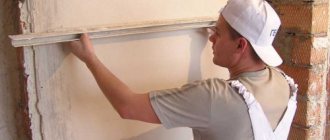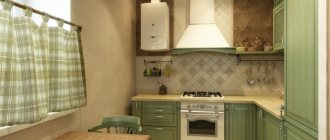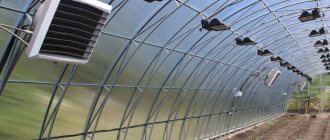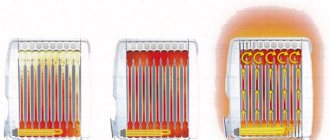An insulated balcony or loggia is an excellent option for expanding the living space of an apartment. In such a room you can arrange an office, a dressing room, a children's playroom or even a small bedroom. In addition, a partially or completely removed balcony block allows you to expand the living room adjacent to the balcony due to additional space.
Ceramic infrared panel
But in all these cases, the main nuance will be maximum insulation and insulation of the balcony. A competent choice of materials, strict adherence to the technologies for their use, arrangement of the heating system is something that you will have to think carefully about. And if it is not so difficult to figure out the repair plan, then problems may arise with the arrangement of heating.
We will look at what heaters can be used on balconies and loggias, the best options for cost and other important aspects in this article.
Radiator on the balcony
A radiator on the balcony is very convenient. Judge for yourself: there’s something for everyone, and there’s no need to turn it on and off.
The forbidden fruit is bitter
However, this type of heating entails certain troubles. Already at zero degrees, the water in the radiator freezes and it can burst. And then all the lower floors will “float”.
That is why the Moscow authorities forbade placing the radiator on the balcony or loggia (Appendix 1 to the Moscow Government Decree of February 8, 2005 N 73-PP, “Reconstruction Measures”, 3 p.). And it doesn’t matter whether you insulated the balcony or not.
For more information on whether or not to remove heating from the legal side, read the article: How to circumvent the ban on removing heating from an apartment to a loggia? Heating without insulation is money down the drain. Which company should I contact for balcony insulation? And how much will it cost? You will find the answers on the site.
After insulation on the balcony, problems may arise: draft, fogging of windows, etc. You can deal with them! Details at the link:
Warm water floor
A warm water floor is a polymer tube that is laid like a snake, a snail, or, if you like, in the shape of another animal. Then it is filled with screed and hot (55-60 degrees) water is run over it.
A water floor will only benefit if you insulate the balcony
With such a heater, the heat is distributed along a trajectory that is very convenient for you. It rises up from the floor. This means that the floor will always be warm, and you can paddle barefoot on the balcony even in winter!
There is one more pleasant moment. The authorities allow underfloor heating on the balcony if it is not connected to the central water supply and heating systems (same document, “Reconstruction Measures”, paragraph 5).
Electric floor on the balcony
Electric heated floors are an excellent replacement for water heating on a balcony or loggia - they won’t flood your neighbors and are easier to install. However, such a floor also requires more money. 1 m2 of electric floor per month consumes as much as 78 rubles worth of electricity! This is assuming you use a thermostat that turns off the floor from time to time.
There are several types of electric floor:
An electric cable floor is laid in the same way as a water floor.
Film floor - a type of infrared floor
Cable floor
It is a cable with a heating wire or wires. Such floors are far from safe - one spark can cause a lot of trouble. Therefore, the cable floor is always installed under the screed.
Another disadvantage is that some types of heating cable (single-core) emit electromagnetic radiation. However, the computer creates the same field, and everyone is still alive. And many are even healthy.
Infrared floor
Does not emit radiation and is fireproof. Therefore, the flooring can be laid directly on it, which greatly simplifies the installation task.
They choose infrared flooring more often than cable flooring not only because of ease of installation. Its main advantage is that it acts on the principle of the sun. In other words, it does not heat the air, like a cable, but the objects in the room. They, in turn, transfer their heat to the air. This makes the balcony warmer and more comfortable.
If you are planning to install a heated floor on your balcony, but have not decided which one, this article will help you: Choosing a heated floor for your balcony. Read about installing an electric floor on a balcony at this link.
How to install a warm water floor yourself? Read here.
Glazing
- What kind of warm glazing of a loggia should there be - with wooden frames, aluminum or metal-plastic?
Aluminum is a metal with high thermal conductivity. The frame will become a cold bridge between the street and the balcony. It will contribute to heat loss and collect condensation.
Let's sweep it aside.
Modern frames made of pressed wood are not much inferior to metal-plastic ones in terms of strength, geometric stability and resistance to moisture. However, with the same functionality, they are noticeably more expensive. At the same time, nothing prevents you from ordering metal-plastic windows that look like wood, with a very reliable imitation of its texture.
The conclusions, I think, are obvious.
Our choice is metal-plastic windows.
- What type of glass should it be?
It all depends on the climate zone. Perhaps I’ll just refer the reader to someone else’s practical experience of using windows:
- In the Khabarovsk Territory, where I lived several years ago (the average January temperature is about -25 C, at peak frosts reach -45 degrees), the most popular option is a double-chamber (triple) double-glazed window made of ordinary glass 4 mm thick;
Triple glazing with regular glass.
- In Sevastopol (the average temperature in January is +3, frosts of -15 are extremely rare and last no more than a week a year), single-chamber (double) double-glazed windows with energy-saving glass are being installed en masse. An infrared-reflective coating on one of the glass units of a double-glazed window helps reduce heat loss in winter and heating of the room in summer.
The operating principle of energy-saving double-glazed windows.
When purchasing glazing, you can save up to a third of its cost by not installing it. However, installing windows yourself will completely void your warranty.
- Do you need separate balcony ventilation? Or just ventilate it by opening windows as needed ?
In my opinion, it would be a good idea to install an adjustable inlet valve in one of the frames. It allows you to more accurately regulate the inflow compared to the window microventilation system (adjusting the position of the sash in transom mode). The influx of fresh air will relieve you, among other things, of condensation on the windows.
If the balcony will be equipped with a constant source of heat, the supply valve should be located directly above it. The thermal curtain will prevent the appearance of cold drafts.
Supply valve in the frame of a metal-plastic window.
Fan heater on the balcony
The fan heater can be placed anywhere: on a windowsill, table or floor
This is a well-known compact device that sucks in cold air and delivers hot air into the room.
A fan heater on a balcony is often used only as an additional source of heat. Why? Of course, it warms the air quite quickly and well, but it is not designed for constant operation. And as soon as you turn it off, it will get colder on the balcony - and you won’t have time to gasp! Besides, it makes a lot of noise.
Battery installation
Steps to take the battery out onto the balcony with your own hands:
- Initially, you need to make appropriate markings where the batteries will be located. The distance from the battery to the window must be at least 100 millimeters, and to the floor a maximum of 120 millimeters.
- After this, you need to start installing the brackets. Please note that the main load should fall on the upper brackets. If the battery is, for example, made of cast iron or other heavy metal, then more upper fasteners may be needed.
- We install the batteries, carefully leveling them using a level.
Convector heater
A convection heater (thermal panel) works on a principle similar to a fan. But you won’t hear any noise from it, no matter how hard you try.
The convector can be left on 24 hours a day
Operating principle of the convector
In general, a convector has all the advantages of a 21st century heater. Heats up quickly, turns off when needed, and is easy to install. And you can place it wherever your heart desires: on the floor, wall and even ceiling! Depending on which part of the balcony needs to be heated.
However, the convector also has disadvantages . Firstly, it dries out the air, which can give you a headache. Secondly, like all electric heaters, it uses a lot of electricity. To heat 1 m2 of balcony per month in Moscow it costs at least 324 rubles! This is if the balcony is well insulated. If not, the costs will increase many times over.
Oil heater
The oil heater is convenient to move around the balcony on wheels
This is another option for electric balcony heating. An oil heater is a metal casing containing an electric coil and oil.
When the oil temperature reaches 70-80 degrees, the heater turns off. So don't worry about safety! However, as well as for your health, because such a heater does not dry out the air.
The oil heater has one more feature . It warms the room quite slowly, and then remains hot for a long time. However, if there are drafts on the balcony, such a heater, unlike other heat sources, will not have time to heat it even for a short time. Heat will disappear faster than it enters. Therefore, you definitely can’t do without insulation here.
Features of insulation
There are the following insulation options:
- Internal.
- External.
In order to avoid the formation of moisture inside the loggia, insulation from the outside is recommended.
External insulation does not hide the internal space of the balcony, but this method is complex and time-consuming
If it is not possible to do it, then they do it internally, taking into account the features of this type of insulation.
The formation of condensation is affected by the difference between the temperatures on the sides of the insulation (on the side of the cold wall and its contact with warm air from the inside). Therefore, the insulation must be provided on both sides with a layer of foil or polypropylene so that moisture does not collect inside it.
Scheme of internal insulation of a balcony
A layer of foil prevents mold and dampness from appearing inside the loggia due to moisture collecting in it. When wondering how to make a warm balcony, you should remember that there are many materials for thermal insulation of balconies and loggias.
Note! The main properties of insulation that affect its quality:
- Heat transfer coefficient (will help save space and reduce pressure on the stove). The higher the indicator, the thinner the insulation layer is needed.
- Vapor permeability, water permeability (affect the climate on the balcony).
- Resistance to mechanical stress (the finish is easier to apply to durable materials).
- Features of installation (the easier it is to install, the easier it is for a person).











